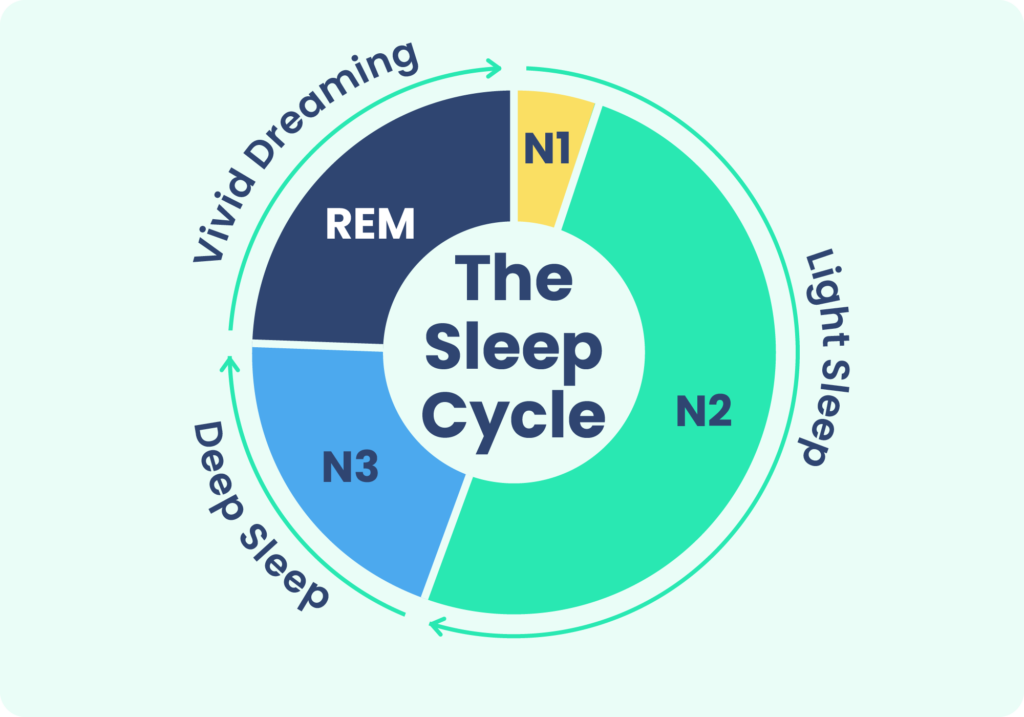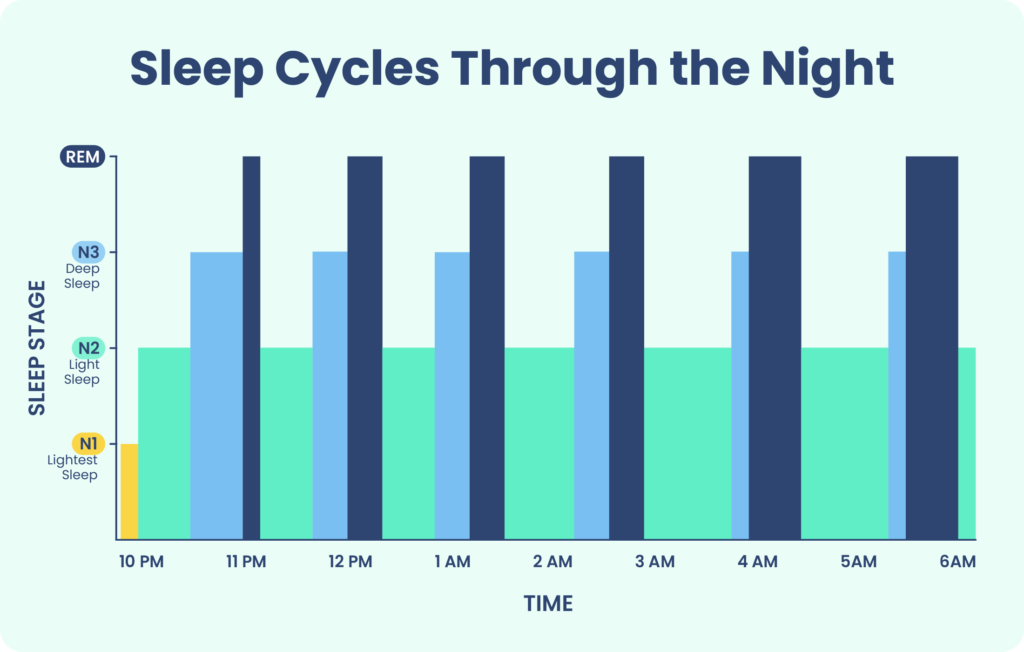筑波大学だけではなく欧米にも睡眠に一かげん持つ専門家がいた。
Stages of Sleep: What Happens in a Sleep Cycle

Eric SuniStaff Writer

Dr. Abhinav SinghSleep Medicine Physician
What Is the Sleep Cycle?

Sleep is not uniform. Instead, over the course of the night, your total sleep is made up of several rounds of the sleep cycle, which is composed of four individual stages. In a typical night, a person goes through four to six sleep cycles Trusted SourceNational Library of Medicine, Biotech InformationThe National Center for Biotechnology Information advances science and health by providing access to biomedical and genomic information.View Source . Not all sleep cycles are the same length, but on average they last about 90 minutes each.
Are All Sleep Cycles the Same?
It is normal for sleep cycles to change Trusted SourceNational Institute of Neurological Disorders and Stroke (NINDS)NINDS aims to seek fundamental knowledge about the brain and nervous system and to use that knowledge to reduce the burden of neurological disease.View Source as you progress through your nightly sleep. The first sleep cycle is often the shortest, ranging from 70 to 100 minutes, while later cycles tend to fall between 90 and 120 minutes. In addition, the composition of each cycle – how much time is spent in each sleep stage – changes as the night goes along.
Sleep cycles can vary from person to person and from night to night based on a wide range of factors such as age, recent sleep patterns, and alcohol consumption.
What Are the Sleep Stages in a Normal Sleep Cycle?
There are four sleep stages, including one for rapid eye movement (REM) sleep and three that form non-REM (NREM) sleep. These stages are determined based on an analysis of brain activity during sleep, which shows distinct patterns that characterize each stage.
| Sleep Stages | Type of Sleep | Other Names | Normal Length |
|---|---|---|---|
| Stage 1 | NREM | N1 | 1-7 minutes |
| Stage 2 | NREM | N2 | 10-25 minutes |
| Stage 3 | NREM | N3, slow-wave sleep (SWS), delta sleep, deep sleep | 20-40 minutes |
| Stage 4 | REM | REM Sleep | 10-60 minutes |
The breakdown of a person’s sleep into various cycles and stages is commonly referred to as sleep architecture. If someone undergoes a sleep study, their sleep architecture can be represented visually in a hypnogram, or graph.
NREM Sleep Patterns
NREM sleep is composed of three different stages. The higher the stage of NREM sleep, the harder it is to wake a person up.
Stage 1
Stage 1, also called N1, is essentially when a person first falls asleep. This stage normally lasts just one to seven minutes.
During N1 sleep, the body has not fully relaxed, though the body and brain activities start to slow with periods of brief movements. There are light changes in brain activity associated with falling asleep in this stage.
It is easy to wake someone up during this sleep stage, but if a person is not disturbed, they can move quickly into stage 2. As the night unfolds, an uninterrupted sleeper may not spend much more time in stage 1 as they move through further sleep cycles.
Stage 2
During stage 2, or N2, the body enters a more subdued state including a drop in temperature, relaxed muscles, and slowed breathing and heart rate. At the same time, brain waves show a new pattern and eye movement stops. On the whole, brain activity slows, but there are short bursts of activity Trusted SourceNational Library of Medicine, Biotech InformationThe National Center for Biotechnology Information advances science and health by providing access to biomedical and genomic information.View Source that actually help resist being woken up by external stimuli.
Stage 2 sleep can last for 10 to 25 minutes during the first sleep cycle, and each N2 stage can become longer during the night. Collectively, a person typically spends about half their sleep time in N2 sleep.
Stage 3
Stage 3 sleep is also known as N3 or deep sleep, and it is harder to wake someone up if they are in this phase. Muscle tone, pulse, and breathing rate decrease in N3 sleep as the body relaxes even further.
The brain activity during this period has an identifiable pattern of what are known as delta waves. For this reason, stage 3 may also be called delta sleep or slow-wave sleep (SWS).
Experts believe that this stage is critical to restorative sleep, allowing for bodily recovery and growth. It may also bolster the immune system and other key bodily processes. Even though brain activity is reduced, there is evidence that deep sleep contributes to insightful thinking Trusted SourceNational Library of Medicine, Biotech InformationThe National Center for Biotechnology Information advances science and health by providing access to biomedical and genomic information.View Source , creativity Trusted SourceNational Library of Medicine, Biotech InformationThe National Center for Biotechnology Information advances science and health by providing access to biomedical and genomic information.View Source , and memory.
You spend the most time in deep sleep during the first half of the night. During the early sleep cycles, N3 stages commonly last for 20 to 40 minutes. As you continue sleeping, these stages get shorter, and more time gets spent in REM sleep instead.
